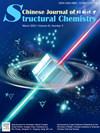MR-TADF材料的空间调制和掺杂浓度无关的窄带发光oled的最新进展
IF 10.3
4区 化学
Q1 CHEMISTRY, INORGANIC & NUCLEAR
引用次数: 0
摘要
多共振热激活延迟荧光(MR-TADF)材料由于其窄带发射特性、高发射强度和可调谐的发射颜色,在推进窄带发射有机发光二极管(oled)方面具有重要的前景。然而,MR-TADF材料的平面性质导致了服务π-π堆积,这可能导致浓度猝灭和光谱展宽,从而限制了它们在oled中的进一步应用。目前,为了减轻MR-TADF材料中的π-π堆积,空间调制是优化相关分子结构的可靠设计策略。根据空间位阻调制的具体形状和范围,可以将其分为在共振核周围引入庞大的群,共振核与空间位阻部分之间的“面对面”和“面对面”屏蔽。本文系统地综述了基于不同空间调制策略的MR-TADF分子的结构设计及其在掺杂浓度无关型oled中的研究进展。本文还讨论了该研究领域面临的挑战,并对未来的发展进行了展望。我们相信,这一综述将推动窄发射oled的快速产业化。本文章由计算机程序翻译,如有差异,请以英文原文为准。

Recent progress in steric modulation of MR-TADF materials and doping concentration independent OLEDs with narrowband emission
Multiple-resonance thermally activated delayed fluorescence (MR-TADF) materials hold significant promise for advancing narrowband emissive organic light-emitting diodes (OLEDs) due to their attractive narrowband emission characteristics, high emission intensity, and tunable emission colors. However, the planar nature of MR-TADF materials leads to serve π-π stacking, which can result in concentration quenching and spectral broadening, thereby limiting their further application in OLEDs. Currently, to mitigate the π-π stacking in MR-TADF materials, steric modulation is a reliable design strategy for optimizing the related molecular structures. Depending on the specific shape and scope of steric modulation, it can be categorized into the introduction of bulky groups around the resonance core, “face-to-edge” and “face-to-face” shielding between the resonance core and the steric hindrance moiety. This review systematically summarizes the structural design of MR-TADF molecules based on the different steric modulation strategies and their progress in the doping concentration-independent OLEDs. It also discusses the challenges in this research area and offers an outlook on future developments. We believe that this review will drive the rapid industrialization of narrow-emission OLEDs.
求助全文
通过发布文献求助,成功后即可免费获取论文全文。
去求助
来源期刊

结构化学
化学-晶体学
CiteScore
4.70
自引率
22.70%
发文量
5334
审稿时长
13 days
期刊介绍:
Chinese Journal of Structural Chemistry “JIEGOU HUAXUE ”, an academic journal consisting of reviews, articles, communications and notes, provides a forum for the reporting and discussion of current novel research achievements in the fields of structural chemistry, crystallography, spectroscopy, quantum chemistry, pharmaceutical chemistry, biochemistry, material science, etc. Structural Chemistry has been indexed by SCI, CA, and some other prestigious publications.
 求助内容:
求助内容: 应助结果提醒方式:
应助结果提醒方式:


